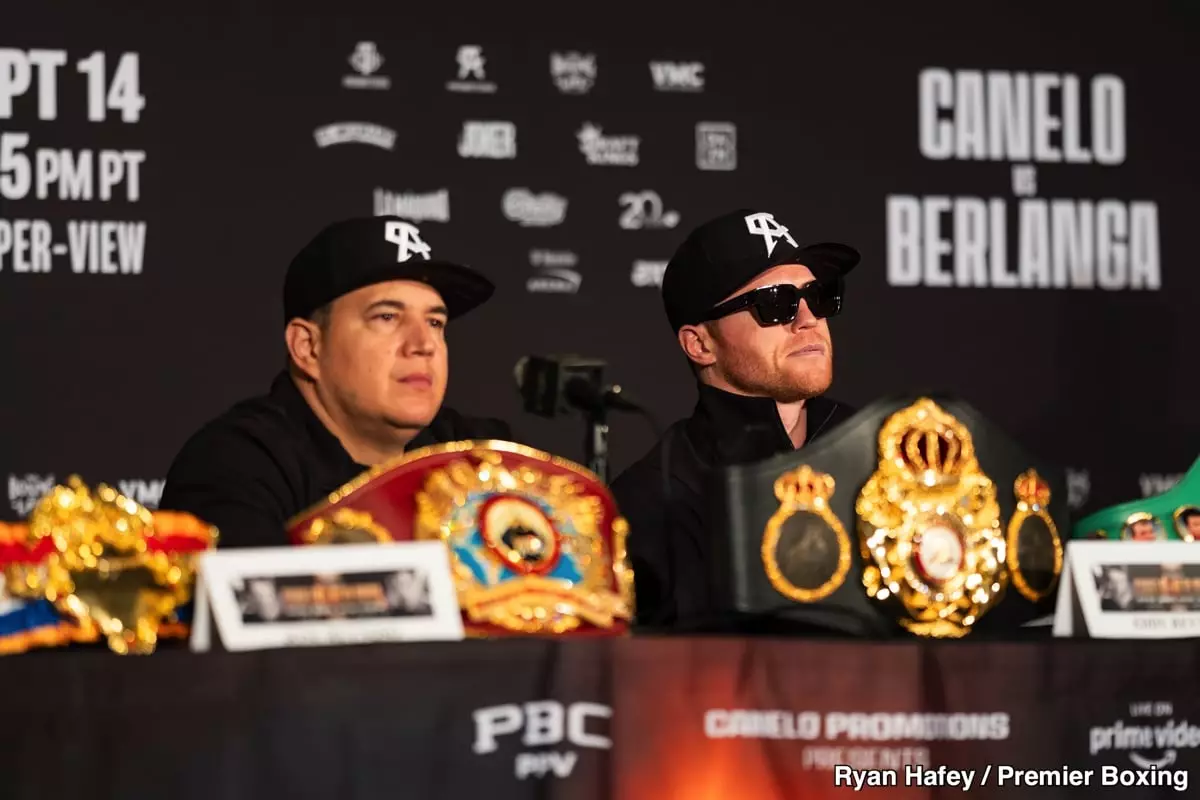In the realm of boxing, the significance of marquee matchups can often be inflated by promoters eager to thrust their fighters into the limelight. Recent claims by Eddie Hearn, the promoter of former heavyweight champion Anthony Joshua, suggest that a showdown between Joshua and Tyson Fury represents the pinnacle of commercial potential in boxing today. However, this assertion demands scrutiny, particularly when measured against the shifting expectations of fans and the evolving dynamics of the sport.
While Hearn’s enthusiasm acknowledges the storied histories of both Joshua and Fury, the reality is that their recent performances have left much to be desired. The pair, once revered for their skills, have both struggled in their latest bouts, leading to an erosion of public interest. U.S. audiences, in particular, are becoming increasingly disillusioned with the notion that Joshua versus Fury still holds substantial allure, as both fighters have increasingly been unable to engage in satisfying contests against notable opponents.
The commercial viability of a match like Joshua-Fury is further hindered by a critical factor: engagement. Americans often prioritize more dynamic rivalries within the sport, and currently, Canelo Alvarez versus Terence Crawford is generating far more excitement among fans. For many, a potential clash between these two champions symbolizes a high-stakes titanic battle with the potential to reshape the boxing landscape.
In recent years, Alvarez has become a household name in boxing, noted for his skill, powerful punches, and numerous titles across multiple weight classes, boasting an impressive record of 62-2-2 with 39 knockouts. Conversely, Crawford’s skillset and unblemished record of 41-0 with 31 KOs have gradually garnered him a dedicated following. The potential for these two superstars to face off has fans buzzing with anticipation, yet it remains mired in the realm of speculation since Alvarez appears disinclined to engage in such a matchup without exorbitant financial incentives.
One cannot overlook the psychological factors that influence boxing matchups. The hype surrounding these potential fights relies heavily on both the timing of the event and the narratives that accompany them. In stark contrast to the limited excitement surrounding a Joshua-Fury fight, the storylines leading up to a Canelo-Crawford bout would likely encompass triumph, rivalry, and the legacy-building efforts of both fighters. This narrative potential is integral in stoking fan interest and driving pay-per-view sales.
Moreover, it’s important to recognize the flaws inherent in comparing heavyweight clashes to those in lighter divisions. Heavyweights are often viewed as the face of boxing, yet their performance quality can vary significantly. The skill sets of middle and light-heavyweight fighters usually produce more engaging matches, as evidenced by Alvarez’s colorful fight history against various top contenders. With heavyweight titans like Joshua and Fury, who have feasted on less competitive opponents in recent years, expectations have inevitably dwindled.
Hearn’s insistence on the commercial value of a Joshua-Fury fight needs tempered realism. While he may tout its potential draws as a significant event for Matchroom Boxing, the genuine interest from fans tells another story. In fact, the financial windfall that would accompany a Canelo-Crawford fight significantly eclipses the predicted numbers for a heavyweight bout. Experts suggest that Canelo-Crawford could comfortably surpass one million pay-per-view buys at competitive pricing, yielding a gate of over $20 million, indicative of the drawing power possessed by both athletes.
In contrast, even with nostalgia and hype, Joshua and Fury’s bout may not captivate audiences to the same extent. The context in which these fighters achieved greatness — primarily through battles against aging contender Wladimir Klitschko and a menu of predictable opponents — continues to haunt their legacy. This track record signifies that the marketability of their anticipated fight is more frail than promoters might wish to admit.
Boxing is undeniably an evolving sport; as such, fervor is not driven merely by heavyweight matchups, but by compelling narratives and stellar records. While Eddie Hearn may champion the potential financial impact of a Joshua-Fury clash, the broader boxing community recognizes that the real draw lies between Alvarez and Crawford. The disappointment surrounding heavyweight fights is a reminder that a compelling narrative, paired with active, skilled fighters, sit at the core of boxing’s true commercial viability in the modern era. It’s time for promoters to adjust their perspectives and refocus their energies where the true excitement lies.


Leave a Reply